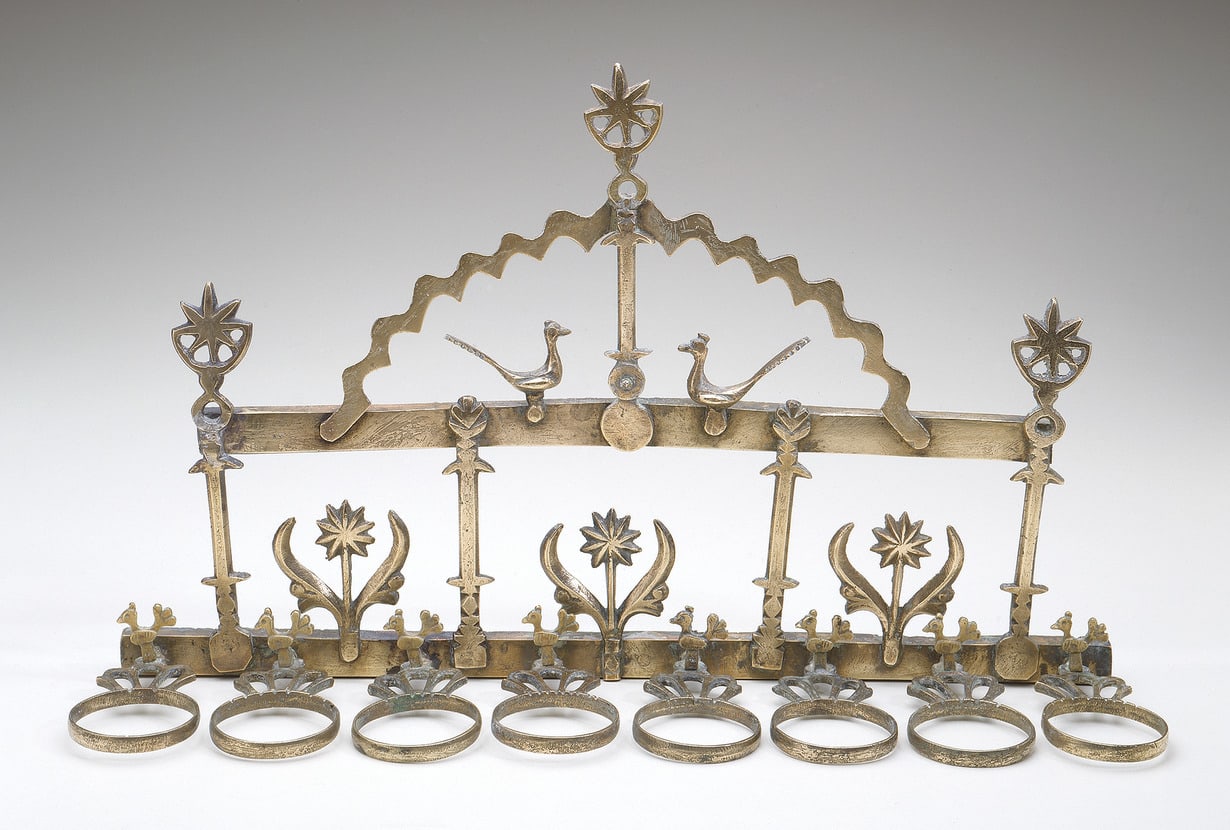
- Object Name:
- Hanukkah Lamp
- Place Made:
- Baghdad
- Date:
- 19th–early 20th century
- Medium:
- Copper alloy: cast
- Dimensions:
- 10 9/16 × 17 5/8 × 4 5/8 in. (26.8 × 44.8 × 11.7 cm)
- Credit Line:
- Gift of Dr. Harry G. Friedman
- Accession Number:
- F 4254
Not On View
The iconography and form of Iraqi Hanukkah lamps reflected changing political and economic conditions, as Iraq went from Ottoman rule to British takeover in 1917, and finally to independence in 1932. Ottoman-period lamps were all of the wall-hung variety typical in Islamic lands, and decorated with symbols taken from the Muslim world. This is exemplified in this lamp by the stars in crescents, Islamic emblems that took on a new significance when adopted by the Ottoman Empire as its symbol. The birds had a more religious meaning; those on the lamp appear to be peacocks, which can be associated in Islam with light. Many Iraqi lamps of this type, including a second example in the Jewish Museum collection, have prominent hamsas, or raised hands, which in both Jewish and Muslim culture are believed to have protective powers. The eight rings on this lamp, each decorated with a peacock, once held large glass oil cups.
This lamp type has been dated to the nineteenth century; this dating is supported by a similar example in the Smithsonian Institution, Washington, D.C., which was acquired in the Middle East between 1899 and 1913.
This lamp type has been dated to the nineteenth century; this dating is supported by a similar example in the Smithsonian Institution, Washington, D.C., which was acquired in the Middle East between 1899 and 1913.
Information may change as a result of ongoing research.